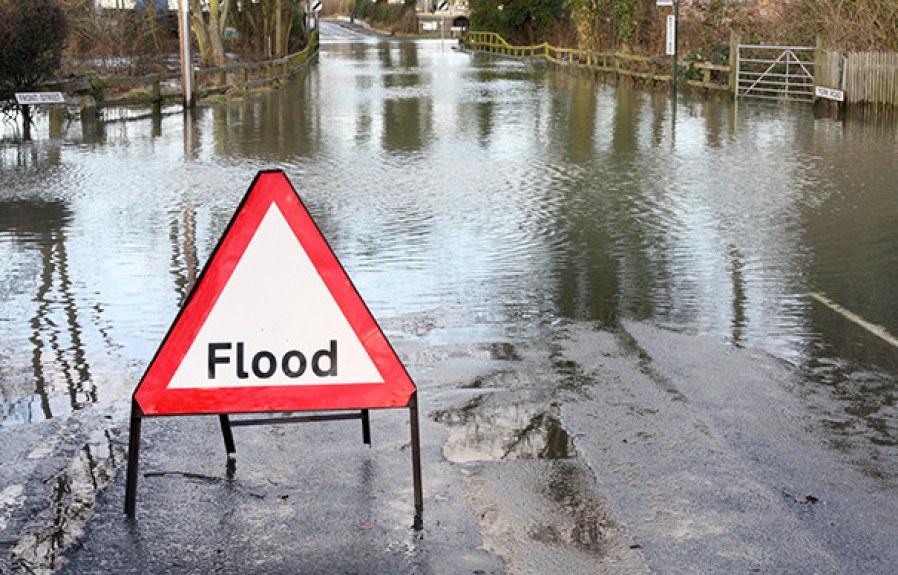For contents insurance, the amount of cover needed depends on the value of your belongings. Consider factors such as the total worth of your possessions and any specific high-value items you want to insure.
Having adequate cover ensures you are protected in case of theft, damage, or loss. It’s essential to evaluate your insurance needs carefully to make sure you have sufficient coverage. Insufficient cover could leave you financially vulnerable in the event of an unforeseen disaster.
By taking the time to assess your belongings and their value, you can secure the right level of contents insurance that provides peace of mind and protection.
1. Assessing Your Belongings
1. Assessing Your Belongings
1.1. Creating An Inventory
To determine your contents insurance needs accurately, start by creating an inventory of all your possessions.
1.2. Estimating The Value
Once you have your inventory, focus on estimating the value of each item to determine the total coverage required.
2. Understanding Coverage Limits
Make sure you understand your coverage limits when choosing contents insurance. It’s essential to know how much cover you need for your belongings. Understanding the extent of coverage ensures you have adequate protection for your possessions in case of damage or loss.
When considering contents insurance, it’s crucial to understand coverage limits.2.1. Replacement Cost Vs. Actual Cash Value
Replacement cost: Reimburses for the full amount needed to replace lost or damaged items. Actual cash value: Covers items at their depreciated value, considering wear and tear. Tip: Opting for replacement cost ensures better coverage for your belongings.2.2. Special Limits On Certain Items
Special limits: Specific caps on high-value items like jewelry or electronics. Advice: Check the policy for special limits to ensure your valuables are adequately covered.Summary Table:
| Aspect | Explanation |
|---|---|
| Replacement Cost | Reimburses full replacement value. |
| Actual Cash Value | Covers depreciated value considering wear and tear. |
| Special Limits | Caps on certain high-value items like jewelry. |
3. Evaluating Risks And Hazards
When determining how much cover you need for contents insurance, it’s crucial to evaluate the risks and hazards that may impact your belongings. By understanding the potential threats, vulnerabilities, and location-specific factors, you can ensure that you have adequate coverage. Let’s take a closer look at these considerations:
3.1. Location And Neighborhood Factors
Your location and neighborhood play a significant role in assessing the risk to your contents. Take note of the following factors:
- Crime rates: Research the crime statistics in your area to gauge the likelihood of theft or burglary. Areas with higher crime rates may call for more comprehensive coverage.
- Geographic risks: Consider any specific geographical risks your area might be prone to, such as flooding if you live in a floodplain, or earthquakes if you reside in a seismically active region.
- Proximity to potential hazards: Identify whether you’re close to high-risk areas like factories, chemical plants, or areas with a history of wildfires. This information is crucial in determining your coverage needs.
3.2. Potential Threats And Vulnerabilities
Understanding the potential threats and vulnerabilities that your belongings could face is vital in determining the appropriate amount of contents insurance.
- Property type: Assess the vulnerabilities of your property. Older buildings may be more susceptible to damage than modern constructions. Additionally, consider the materials used in your property, as some may be more prone to damage or theft.
- Contents value: Take a thorough inventory of your belongings and estimate their total value. Ensure that your coverage adequately reflects the value of your possessions.
- Valuables and high-risk items: Identify any high-value items in your possession, such as jewelry, electronics, or artwork. Determine if additional coverage is needed for these items specifically.
- Lifestyle considerations: Consider any factors unique to your lifestyle. For example, if you frequently entertain guests or have a home-based business, you may need coverage for liabilities associated with these activities.
Assessing the risks and hazards specific to your location and understanding potential threats and vulnerabilities will help you determine the optimal level of contents insurance coverage. By carefully evaluating these factors, you can ensure that your insurance policy adequately safeguards your belongings.

Credit: redheadmom.com
4. Calculating Replacement Costs
When purchasing contents insurance, it’s crucial to accurately calculate the replacement costs of your possessions. This ensures you’re adequately covered in the event of a claim. Proper assessment of replacement costs will aid in determining the level of cover required for your contents insurance policy.
4.1. Room-by-room Assessment
Conducting a thorough room-by-room assessment of your belongings is essential to determine their replacement value. Take inventory of all items, from furniture to electronics to clothing, documenting them with accompanying photos or videos. Utilize detailed spreadsheets or inventory apps to organize and track each item’s value for an accurate assessment.
4.2. Appraisal And Professional Help
For specialized items or those with uncertain value, seeking professional appraisal guidance is advisable. Artwork, antiques, jewelry, and other high-value items may necessitate the expertise of certified professionals to ascertain their replacement cost accurately. When in doubt, enlisting the services of professional appraisers or consulting with insurance agents can provide invaluable assistance in determining adequate contents insurance coverage.
5. Considering Additional Coverage
When it comes to protecting your possessions, considering additional coverage for your contents insurance is essential. Whether you have high-value items or want personal liability coverage, reviewing your policy to ensure adequate protection is crucial. Here, we’ll explore the factors to consider when thinking about additional coverage for your contents insurance.
5.1. High-value Items
When you have valuable items such as jewelry, fine art, or technology, a standard contents insurance policy may not provide sufficient coverage. Adding a high-value items clause to your policy can ensure these possessions are adequately protected. Remember to appraise these items regularly to ensure they are adequately covered in the policy.
5.2. Personal Liability
Personal liability coverage is crucial for protecting yourself in the event of accidents or injuries that occur on your property. This coverage can provide financial protection if someone is injured while visiting your home. It’s important to consider personal liability as part of your contents insurance policy to safeguard against unforeseen incidents that could result in legal or medical expenses.
6. Reviewing Policy Exclusions
6. Reviewing Policy Exclusions
When it comes to contents insurance, reviewing policy exclusions is a crucial step to ensure you have the right coverage for your belongings. This involves understanding excluded perils and checking for any coverage gaps that may leave you underinsured. Let’s take a closer look at these two aspects:
6.1. Understanding Excluded Perils
Before finalizing your contents insurance policy, it’s important to understand the perils that are excluded from coverage. Excluded perils refer to the specific events or circumstances in which your insurance provider will not compensate you for any loss or damage. While the list of excluded perils may vary between insurance providers, there are some common exclusions you should be aware of:
| Excluded Perils | Description |
|---|---|
| Acts of war or terrorism | Loss or damage caused by war or terrorist activities are typically excluded. |
| Nuclear accidents | Any loss or damage resulting from a nuclear accident is usually not covered. |
| Intentional acts | If you intentionally cause damage to your belongings, it won’t be covered. |
In addition to these common exclusions, insurance policies may also exclude damages caused by natural disasters such as earthquakes, floods, and hurricanes. By understanding excluded perils, you can assess the level of risk associated with your belongings and make an informed decision.
6.2. Checking for Coverage Gaps
Aside from excluded perils, it’s essential to check for any coverage gaps in your contents insurance policy. Coverage gaps refer to situations where your policy may fall short in adequately protecting your belongings. To identify potential coverage gaps, consider the following:
- Accurate valuation: Ensure your policy covers the full value of your belongings, taking into account any recent purchases or valuable items.
- High-value items: Check if your policy covers high-value items such as jewelry, artwork, or electronics, as they may require additional coverage.
- Personal liability: Confirm if your policy includes personal liability coverage, which protects you in case of injuries or accidents that occur within your home.
- Temporary living expenses: In the event of a covered loss, some policies provide coverage for temporary living arrangements if your home becomes uninhabitable.
By reviewing your policy for these potential coverage gaps, you can ensure that you have sufficient protection for your belongings and peace of mind in case of any unfortunate events.
7. Shopping Around For Quotes
When it comes to getting the right level of cover for your contents insurance, shopping around for quotes is crucial.
7.1. Comparing Insurance Providers
Compare quotes from various insurance providers to find the most suitable policy for your needs.
Evaluate the coverage options, deductibles, and premiums from each provider to make an informed decision.
7.2. Requesting Customized Quotes
Request customized quotes based on your specific requirements to ensure you get tailored coverage.
- Provide details about the value of your contents and any specific items that need additional coverage.
- Ask about any discounts or special offers available to lower your insurance costs.
8. Reviewing And Updating Regularly
8. Reviewing and Updating Regularly
8.1. Reassessing Your Inventory
In order to ensure your contents insurance remains adequate, regularly review the items in your home.
8.2. Adjusting Coverage As Needed
As life changes, be prepared to adjust your coverage to reflect any new valuable possessions or changes in circumstances.
Frequently Asked Questions For How Much Cover For Contents Insurance
What Does Contents Insurance Cover?
Contents insurance covers personal belongings within your home, including furniture, electronics, and valuables, protecting them from theft, fire, or damage.
How Much Contents Insurance Do I Need?
The amount of contents insurance you need depends on the total value of your belongings. It’s crucial to accurately assess the cost of replacing all your possessions in the event of loss or damage.
Can Contents Insurance Cover Items Outside The Home?
Yes, some contents insurance policies offer coverage for personal belongings outside the home, such as items you carry with you or in your car. Check with your insurer for specific details.
Conclusion
Determining how much cover you need for contents insurance is crucial in protecting your valuable belongings. Assessing the value of your possessions, considering potential risks, and understanding the policy terms are key factors in making an informed decision. By carefully evaluating your needs and choosing the right coverage, you can have peace of mind knowing that you are adequately protected against any unforeseen circumstances.
It is always advisable to consult with insurance experts for personalized advice tailored to your specific requirements.



Leave a comment